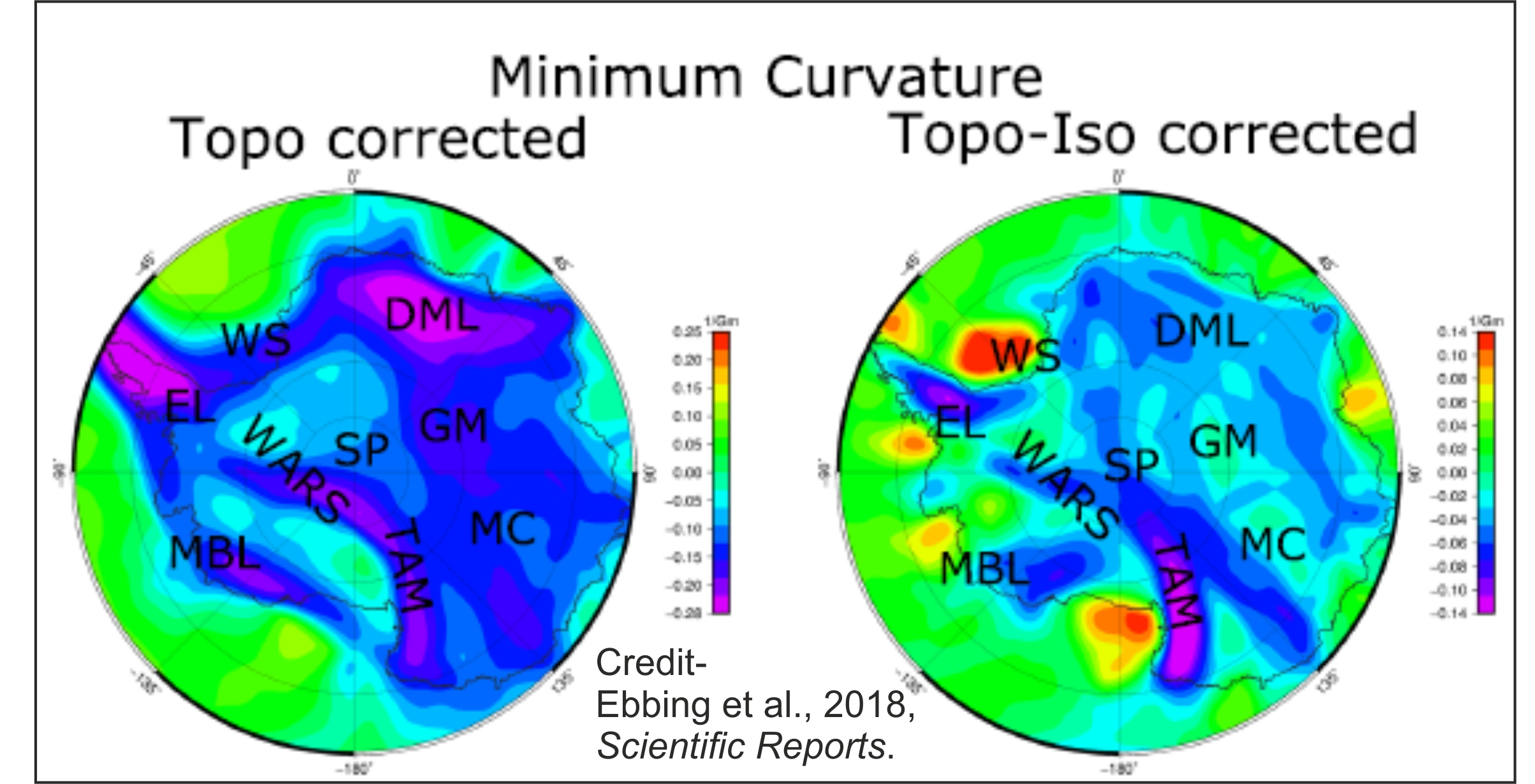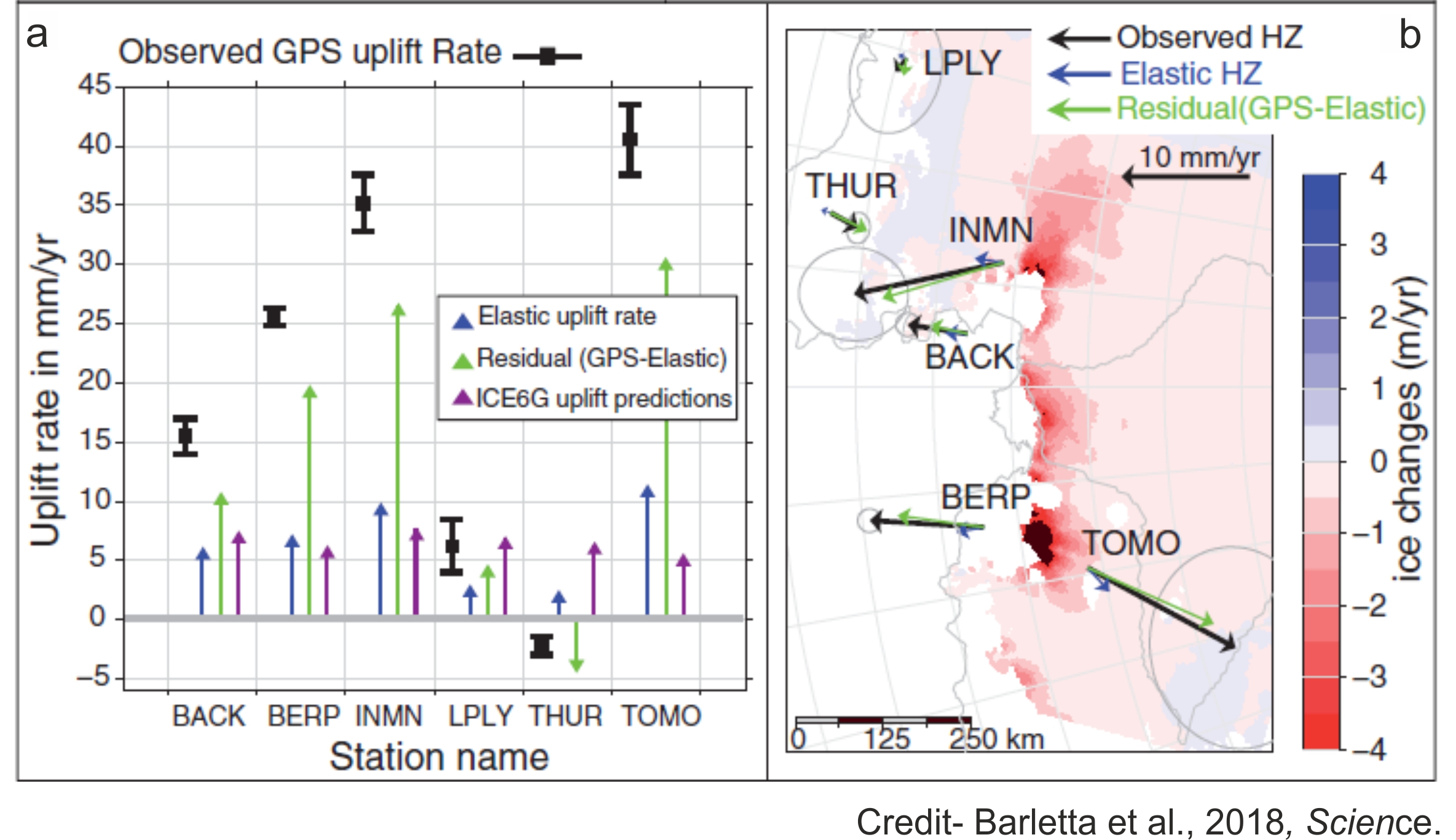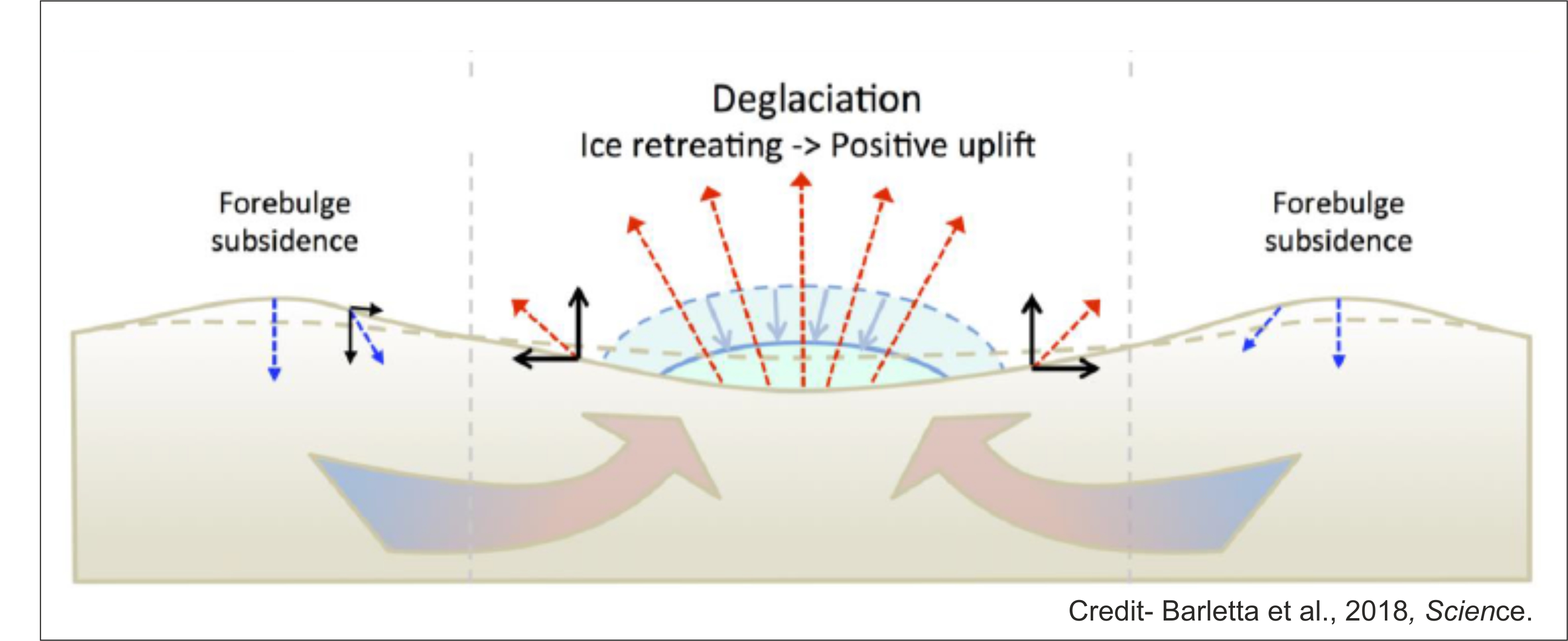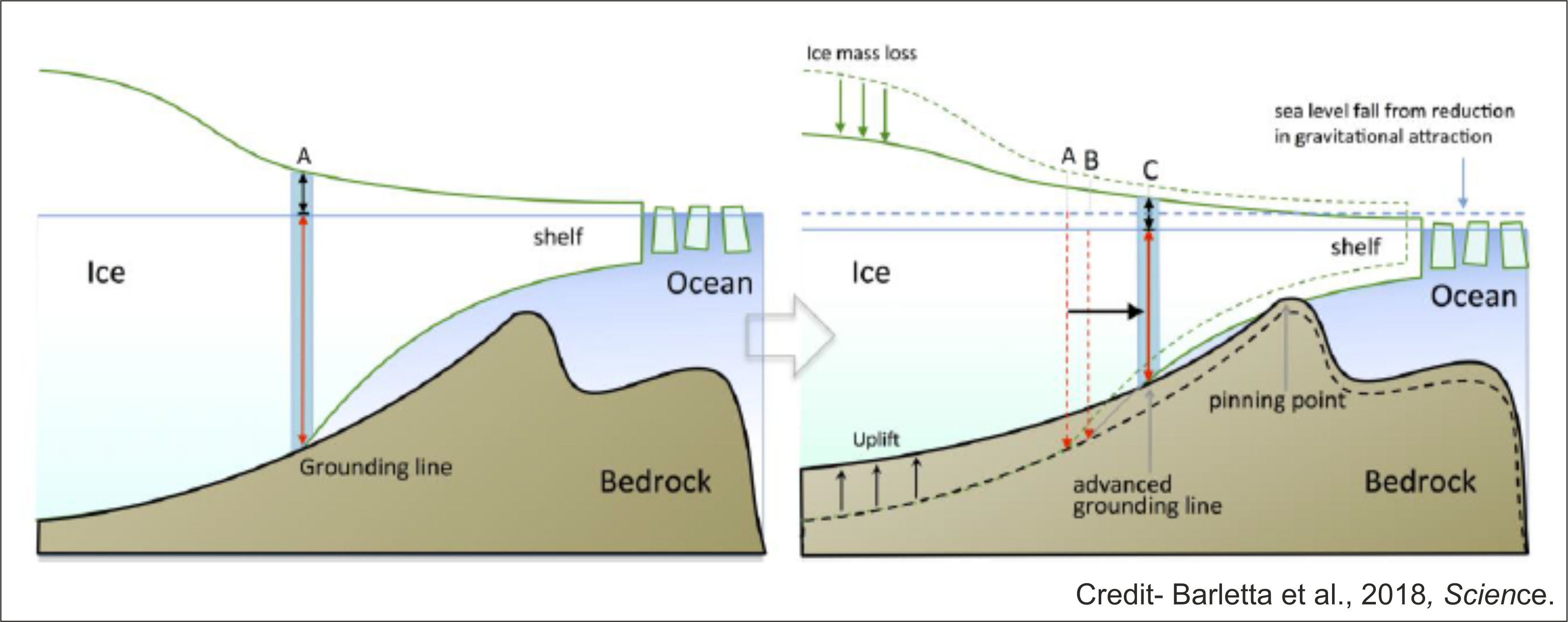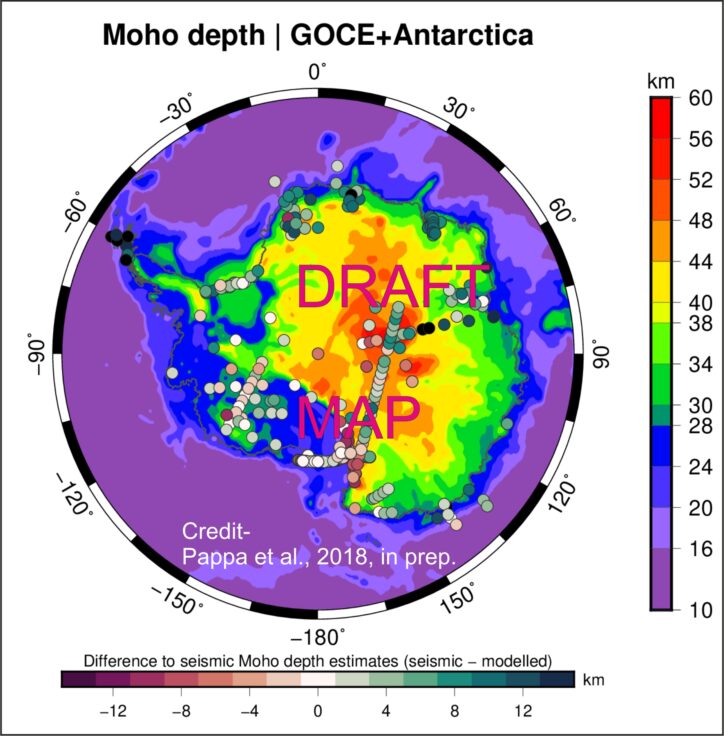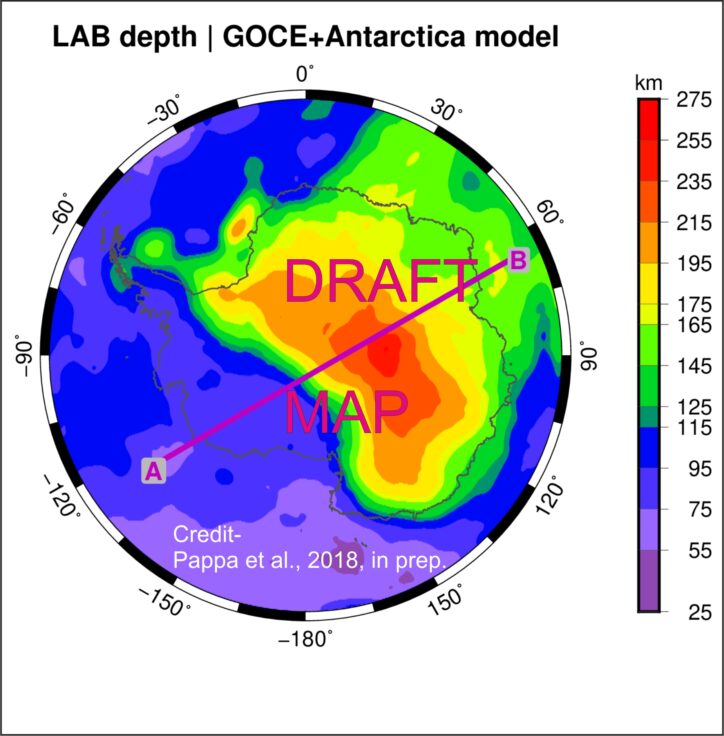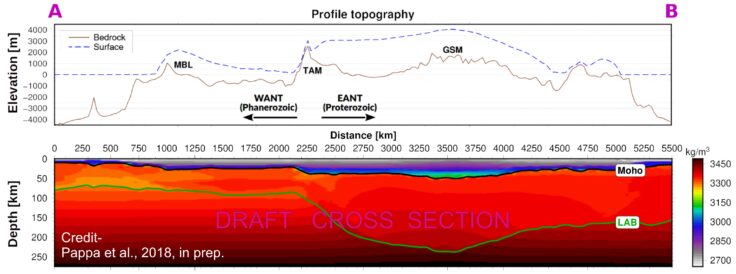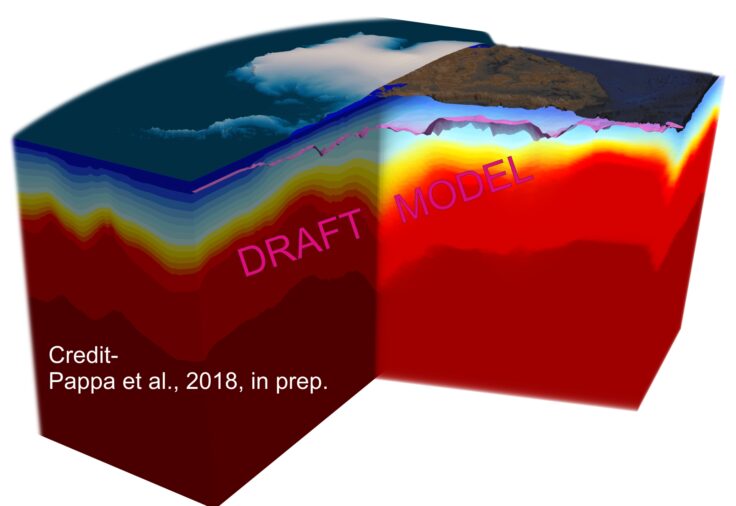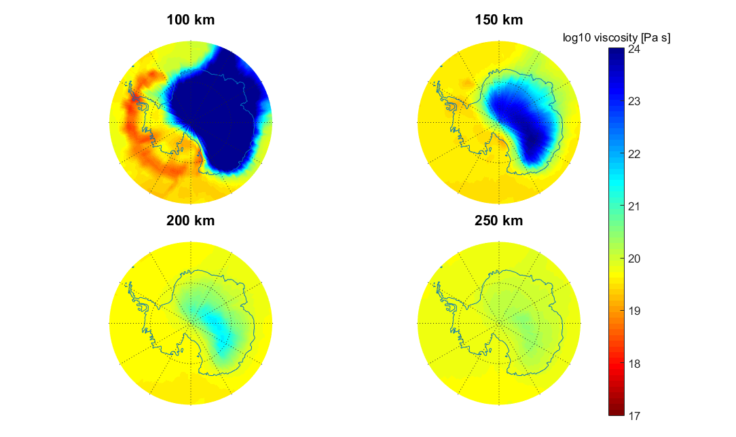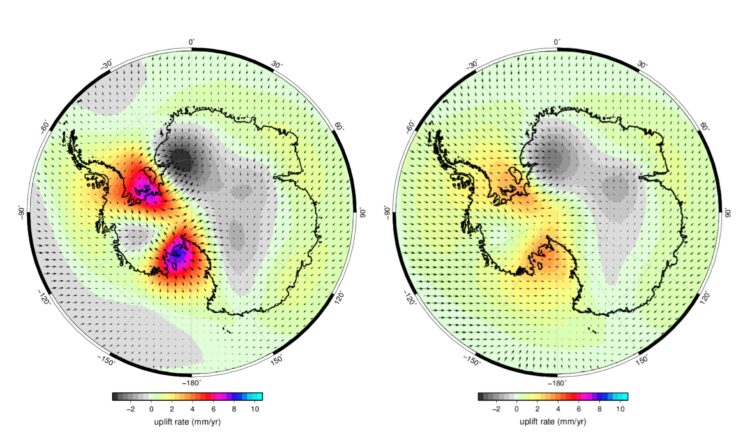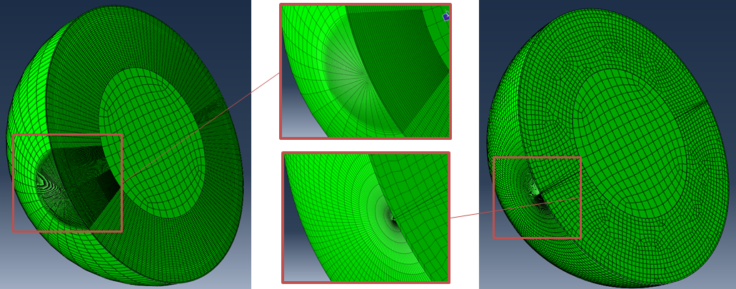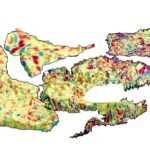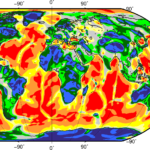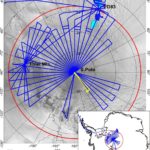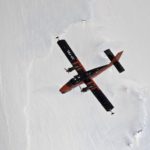Publications
Barletta, V.R, Bevis, M., Smith, B.E., Wilson, T., Brown, A., Bordoni, A., Willis, M., Khan, S.A., Rovira-Navarro, M., Dalziel, I., Smalley, Jr. R., Kendrick, E., Konfal, S., Caccamise II, D.J., Aster, R.C, Nyblade, A, Wiens, D.A, (2018). Observed rapid bedrock uplift in Amundsen Sea Embayment promotes ice-sheet stability, Science 360, 6395, pp 1335-1339; DOI: 10.1126/science.aao1447.
Ebbing, J., Haas, P., Ferraccioli, F., Pappa, F., Szwillus W., and Bouman J., (2018). Earth tectonics as seen by GOCE – Enhanced satellite gravity gradient imaging. Scientific Reports, 8:16356; DOI: 10.1038/s41598-018-34733-9.
Hermans, T. H. J., van der Wal, W., & Broerse, T., (2018). Reversal of the direction of horizontal velocities induced by GIA as a function of mantle viscosity. Geophysical Research Letters, 45. https://doi.org/10.1029/2018GL078533.
Martinec, Z., Klemann, V., van der Wal, W., Riva, R E M , Spada, G., Sun, Y., Melini, D., Kachuck, S.B., Barletta, V., Simon, K., James, G.A.T.S., (2018). A benchmark study of numerical implementations of the sea level equation in GIA modelling, Geophysical Journal International, 215, 1(1), 389–414, https://doi.org/10.1093/gji/ggy280.
Presentations
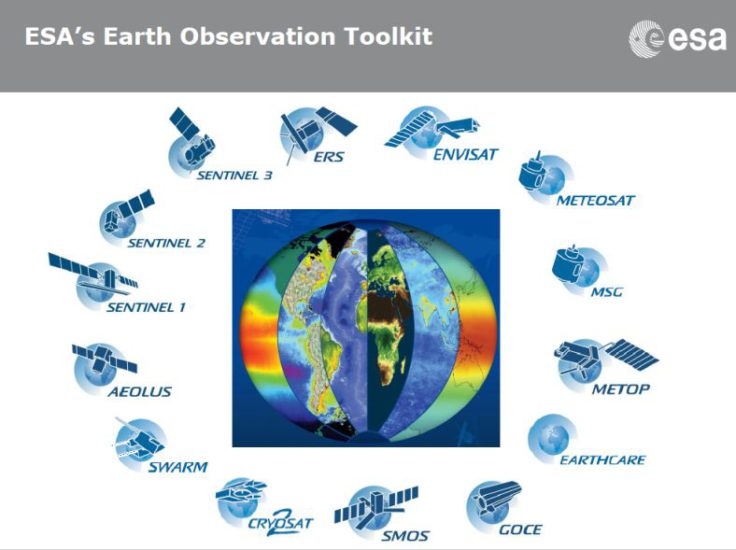
ESA’s Earth Observation Toolkit
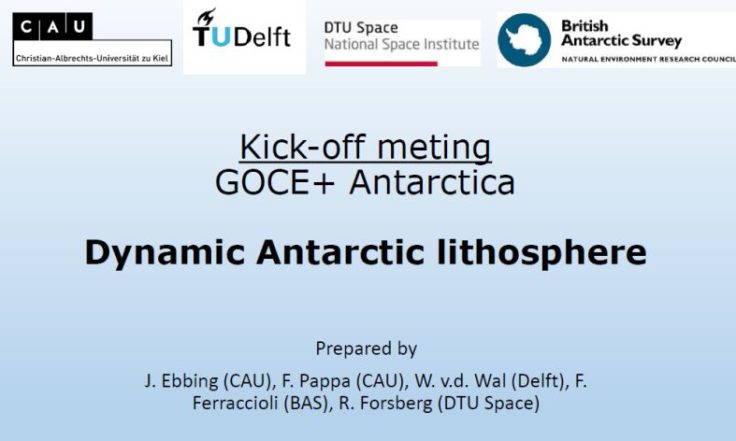
Kick-off meting GOCE+ Antarctica Dynamic Antarctic lithosphere
Conference Abstracts
2018
Barletta VR, Bordoni A, Non-Linear GIA correction for GRACE-derived mass balance in low viscosity regions. EGU, Vienna, 2018.
Bredow, E., Ebbing, J., Pappa, F., Barletta, V., Ferraccioli, F., van der Wal, W., Bouman, J., Steinberger, B., Geodynamic modelling of the West Antarctic mantle – rift or plume dominated? POLAR18, Davos 2018.
Ebbing, J., Macelloni, G., Kern, M., Ferraccioli, F., Pappa, F., Satellite estimates of the Antarctic heat. EGU 2018.
Ferraccioli, F., Ebbing, J., Pappa, F., Forsberg, R., Kern, M., Antarctic lithospheric provinces imaged with satellite gravity gradient and airborne gravity data. EGU 2018.
Ferraccioli, F., Ebbing J. Devil in the detail: enhanced imaging of Antarctic crustal and lithospheric provinces to aid future geothermal heat flux estimation. Taking the Temperature of the Antarctic Continent Workshop 2018.
Ferraccioli, F., Ebbing, J., Pappa, F., Kern, M., Forsberg, R., Satellite gravity gradient imaging of the Antarctic lithosphere. POLAR 2018, Davos.
Ferraccioli, F., Ebbing, J., Pappa, F., Kern, M., Forsberg, R., T.A Jordan, Recent satellite and airborne geophysical imaging of the Antarctic lithosphere, UK Antarctic Conference 2018, Durham.
Haas, P., Gaina, C., Ebbing, J., Unveiling signs of old supercontinents by satellite gravity gradients and curvature attributes with special focus on Antarctica. EGU 2018.
Pappa, F.; Ebbing, J.; Ferraccioli, F.; van der Wal, W.; Blank, B., Integrated 3D lithosphere model of Antarctica. Abstract for POLAR18, Davos 2018.
Pappa, F., Macelloni, G., Kern, M., Ferraccioli, F., Ebbing, J. – Taking the temperature of Antarctica with satellites. Taking the Temperature of the Antarctic Continent Workshop 2018.
Pappa, F., Ebbing, J., Ferraccioli, F., Van der Wal, W., Blank, B., A 3D lithospheric model of Antarctica and its implications on mantle viscosity. EGU 2018.
van der Wal, Pappa,F., Egbrink, D.E., Ebbing, J., GIA model for Antarctica with 3D viscosity estimates based on seismology and gravity. EGU 2018.
Wansing, A., Ebbing, J. – Combined modelling of satellite and airborne magnetic data for East Antarctica. 27. Internationale Polartagung, Rostock, 2018.
2017
Martinec, Z. et al (W. van der Wal, B. Blank), A benchmark study of the sea-level equation in GIA modelling, EGU, Vienna, 2017
Ebbing, Jörg; Pappa, F.; Barletta, V., Blank, B., Ferraccioli, F., Forsberg, R., Kern, M., v.d. Wal, W., The influence of the Antarctic lithosphere on glacial isostatic adjustment modelling. IAG-IASPEI, Kobe, Japan, 2017.
Ebbing, J., Ferraccioli, F., Pappa, F., Kern, M., Forsberg, R., Satellite gravity gradient views help reveal the Antarctic lithosphere. AGU Fall Meeting, 2017.
Pappa, F., Ebbing, J., Ferraccioli, F., van der Wal, W., 2017. Detecting the ancient cores of Antarctica in a new integrated lithospheric model. EGU, 2017.
Ferraccioli, F. , Ebbing, J., Pappa, F., Kern, M., Forsberg, R., 2017. The lithosphere of the Antarctic continent: new insights from satellite gravity gradient data. EGU 2017.
Ferraccioli, F., Seddon S., Finn C.A., Wu. G., Bell. R.E., Jordan T.A., 2017. Imprints of a Pan-African transpressional orogen superimposed on an inferred Grenvillian accretionary belt in central East Antarctica. EGU, 2017.
Ferraccioli, F. T.A. Jordan, R. Forsberg, A.V. Olesen, G. Eagles, K. Matsuoka, T. Casal, 2017. New aerogeophysical views of the South Pole Frontier. International Workshop “Airborne Geodesy and Geophysics with Focus on Polar Applications“ Dresden, 19-21 April 2017.
Ferraccioli, F., Seddon S., Finn C.A., Wu. G., Bell. R.E., Jordan T.A., 2017. Airborne geophysics images a Pan-African transpressional orogen superimposed on a Grenvillian accretionary belt in central East Antarctica, International Workshop “Airborne Geodesy and Geophysics with Focus on Polar Applications“ Dresden, 19-21 April 2017.
Pappa, F., Ebbing, J., Ferraccioli, F., van der Wal, W., 2017. Antarctica’s lithosphere revealed in an integrated 3D density model. 77. Jahrestagung der Deutschen Geophysikalischen Gesellschaft, Potsdam.
Hartmann, R., Pappa, F., Ebbing, J., 2017. Effekt mariner und kontinentaler Sedimentbecken auf die Schweregradienten in der Antarktis. 77. Jahrestagung der Deutschen Geophysikalischen Gesellschaft, Potsdam.
Ebbing, J., Pappa, F., Barletta, V., Blank, B., Ferraccioli, F., Forsberg, R., v.d. Wal, W., Kern, M., Linking GIA and Lithospheric Structure of Antarctica with Satellite Gravity Gradients. Fourth Swarm Science Meeting, Banff, Canada.
Blank, B., Hu, H., van der Wal, W., Pappa, F., Ebbing, J., 2017. Finite-element GIA Estimations For Antarctica Based On A New Lithospheric Model. North-American CryoSat Science Meeting. Banff, Canada.
Blank, B., Van der Wal, W., Pappa, F., and Ebbing, J., A 3D Finite Element Model with Improved Spatial Resolution to Investigate the Effect of Varying Viscosity on Antarctica. AGU Fall Meeting 2017.
Hermans, T.J., W. van der Wal, S. Konfal, F. Pappa, Workshop on Glacial Isostatic Adjustment and Elastic Deformation, Reykjavik, 5-7 september 2017.
Pappa, F., Ebbing, J., Ferraccioli, F., van der Wal, W., Blank, B., An integrated 3D model of Antarctica’s lithosphere as a basis for cryospheric modelling. Workshop on Glacial isostatic adjustment and elastic deformation, Reykjavik, Iceland, September 5 – 7, 2017.
Pappa, F., Ebbing, J., Ferraccioli, F., Isostatic Implications of Different Seismic and Gravity Derived Moho Depths for Antarctica. AGU Fall Meeting, 2017.
van der Wal, W., P. Vizcaino Rubio, B. de Boer, R. van de Wal, D. Oude Egbrink, Effect of laterally varying bedrock relaxation time on ice sheet growth, Workshop on Glacial Isostatic Adjustment and Elastic Deformation, Reykjavik, 5-7 September 2017.
van der Wal, W., Vizcaino Rubio, P., De Boer, B., van de Wal, R.S.W., Ice sheet growth with laterally varying bedrock relaxation time, EGU, Vienna 2017.
2016
Barletta, V.R., Bordoni, A., Bevis, M.G., Wilson, T.J., Rovira, M., 2016. Sensitivity of modeled rapid bedrock displacement in the Amundsen Embayment sector. AGU Fall Meeting, San Francisco.
Ferraccioli, F. , Bell, R.E., Blankenship, D.D., Young, D.A., Eagles, G., Forsberg, R., Armadillo, E., Aitken, A., Jacobs, J., Seddon, S., Jordan, T.A., Golynsky, S., Ebbing, J., Finn., C., Dalziel, I.W.D, 2016. Revealing the crustal architecture of the least understood composite craton on Earth: East Antarctica. AGU Fall Meeting, San Francisco, 2016.
Forsberg, R., Olesen, A.V., Jordan, T., Ferraccioli, F., Matsuoka, K., – Airborne geophysical surveys of unexplored regions of Antarctica – results of the ESA PolarGap campaign. AGU Fall Meeting, San Francisco, 2016.
Pappa, Folker; Ebbing, Jörg; Ferraccioli, F., Wal, W.v.d., Barletta, V., 2016. Deciphering the changes in the lithospheric structure of Antarctica by combining seismological and satellite gravity gradient data. AGU Fall Meeting, San Francisco, 2016.
Whitehouse, P., van der Wal, W., King, M., The importance of considering lateral variations in mantle rheology when investigating past and present Antarctic Ice Sheet change (Invited), AGU Fall Meeting, San Francisco, 2016.
Ebbing, J., 2016. From space under the ice. Invited talk at Geological Survey of Norway, October 20th 2016.
Forsberg, R., Olesen, A.V., Jordan, T., Ferraccioli, F., Matsuoka, K., Airborne geophysical survey of the GOCE polar gap in Antarctica. IAG Symposium on Gravity, Geoid and Height Systems, Thessaloniki, Greece, Sep 2016.
Ferraccioli, F., Ebbing, J., Bouman, J., Pappa, V., Kern, M., Forsberg, R., Barletta, V., Martos, Y. , Root, B., van der Wal, W., 2016. Satellite gravity gradient and airborne gravity views of the Antarctic lithosphere. International Geological Conference, Cape Town, Sept. 2016.
Ebbing, Jörg; Bouman, Johannes, Ferraccioli, Fausto; Kern, Michael; Barletta, Valentina; Forsberg, Rene; Pappa, Folker; Root, Bart; v.d. Wal, Wouter, 2016. Seeing beneath the ice with satellites – the dynamic Antarctic lithosphere. SCAR August 2016, Kuala Lumpur.
Whitehouse, P., van der Wal, W., Using 3D Glacial Isostatic Adjustment models to determine the regional sensitivity of the solid Earth to past ice mass change. SCAR meeting August 2016, Kuala Lumpur.
Ebbing, J., 2016. Dynamic Antarctic lithosphere. Invited talk at Geophysical Seminar, University of Hamburg, June, 20th 2016.
Ebbing, Jörg, Ferraccioli, Fausto; Haagmans, Roger; Kern, Michael; Barletta, Valentina; Forsberg, Rene; Pappa, Folker; v.d. Wal, Wouter; Root, Bart; Bouman, Johannes. GOCE+Antarctica: Dynamic Antarctic lithosphere. ESA Living Planet Symposium 2016, Prague.
Ebbing, Jörg, Pappa, Folker; Szwillus, Wolfgang, 2016.- Curvature analysis of satellite gradients – A meaningful tool for tectonic interpretation? EGU General Assembly 2016, Vienna.
Pappa, Folker; Ebbing, Jörg; Haas, Peter; Rabbel, Wolfgang , 2016- Satellite gravity gradients to study the lithosphere – Case examples from Antarctica and the Tornquist Zone. ESA Living Planet Symposium 2016, Prague.
Pappa, Folker; Ebbing, Jörg; Haas, Peter, 2016. – Analyse von Satelliten-Schweregradienten als Grundlage zur Entwicklung eines Lithosphären modells des antarktischen Kontinents. 76. Jahrestagung der Deutschen Geophysikalischen Gesellschaft e.V., Münster 2016
Key References (GOCE+ Antarctica researchers in bold)
Bouman J., Ebbing J., Fuchs M., Sebera J., Lieb V., Szwillus W., Haagmans R., Novak P., 2016. Satellite gravity gradient grids for geophysics. Nature Scientific Reports, 6:21050, 10.1038/srep21050, 2016 (Open Access).
Scheinert M., Ferraccioli F., Schwabe J., Bell R., Studinger M., Damaske D., Jokat J., Aleshkowa N., Jordan T.A., Leitchenkov G., Blankenship D.D., Damiani T.M., Cochran J.R., Richter T.D., 2016. New Antarctic Gravity Anomaly Grid for Enhanced Geodetic and Geophysical Studies in Antarctica. Geophysical Research Letters doi:10.1002/2015GL067439.
Bouman J., Ebbing J., Meekes S., Fattah R.A., Fuchs M., Gradmann S., Haagmans R., Lieb V., Schmidt M., Dettmering D., Bosch W., 2015. GOCE gravity gradient data for lithospheric modeling. International Journal of Applied Earth Observation and Geoinformation 35(A): 16-30, Elsevier, 10.1016/j.jag.2013.11.001.
van der Wal, Wouter, Whitehouse, Pippa L. & Schrama, E.J.O, 2015. Effect of GIA models with 3D composite mantle viscosity on GRACE mass balance estimates for Antarctica. Earth and Planetary Science Letters, 414:134-143.
Bouman J., Fuchs M., Ivins E., van_der_Wal W., Schrama E., Visser P., Horwath M., 2014. Antarctic outlet glacier mass change resolved at basin scale from satellite gravity gradiometry. Geophysical Research Letters 41(16): 5919-5926, 10.1002/2014GL060637.
Ebbing J., Bouman J., Fuchs M., Lieb V., Haagmans R., Meekes J.A.C., Fattah R.A., 2013. Advancements in satellite gravity gradient data for crustal studies. The Leading Edge 32(8): 900-906, Society of Exploration Geophysicists, 10.1190/tle32080900.1.
Bingham, R.G., Ferraccioli, F., King, E.C., Larter, R.D., Pritchard, H.D., Smith, A.M. & Vaughan, D.G., 2012. Inland thinning of West Antarctic Ice Sheet steered along subglacial rifts. Nature, 487, 468-471. DOI: 10.1038/nature11292.
Ferraccioli, F., Finn, C. A., Jordan, T.A., Bell, R.E., Anderson, L.M., Damaske, D., 2011. East Antarctic Rifting Triggers Uplift of the Gamburtsev Mountains. Nature, 479, 388-392, doi:10.1038/nature10566.
